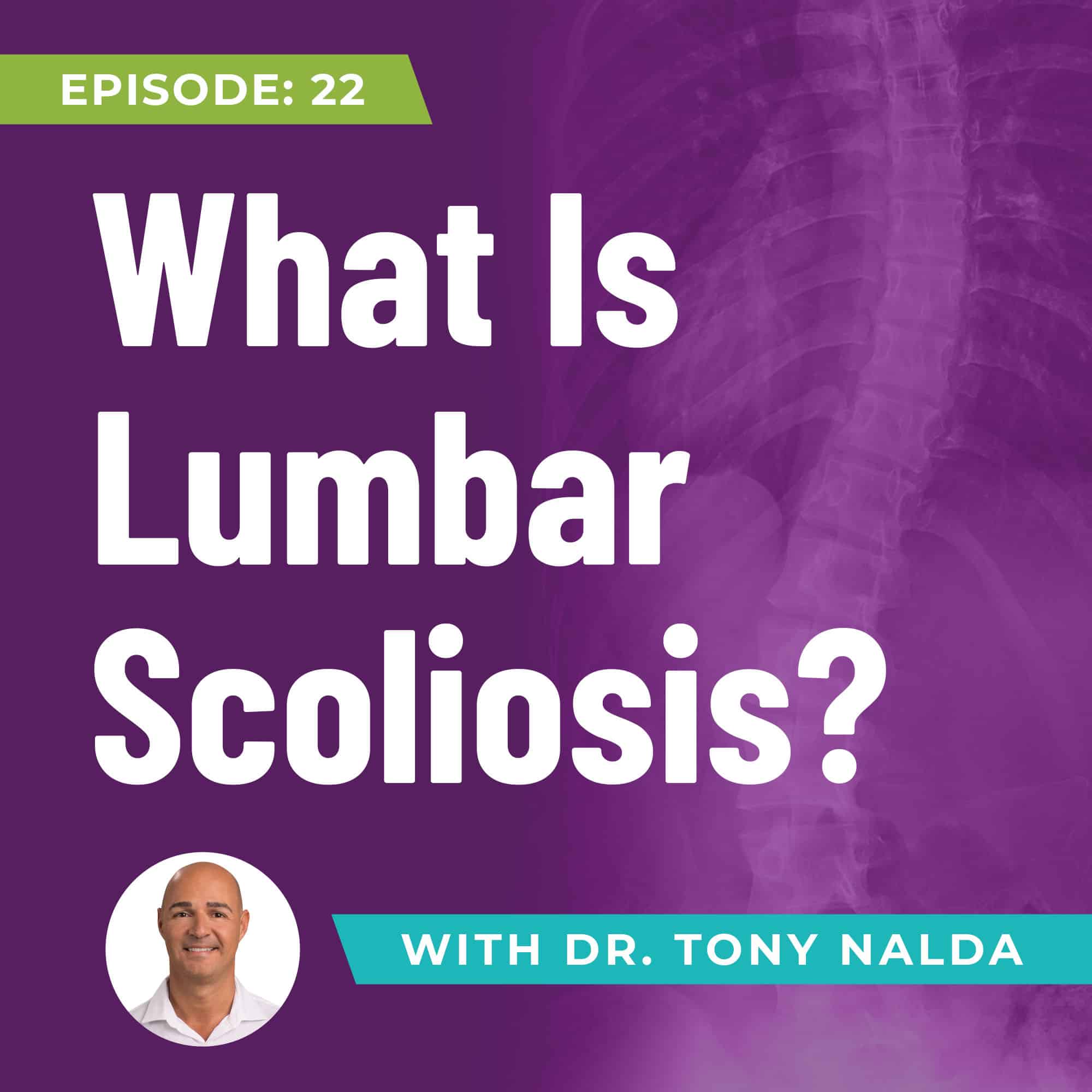Episode 22: What Is Lumbar Scoliosis?
When there’s a diagnosis of Scoliosis, it’s typically done within the area of the spine in which it’s affected.
Let’s identify the three main sections of the spine.
- The cervical spine is the neck region.
- The thoracic spine is located mid-back.
- The lumbar spine is the lower back.
When we deal with spinal anatomy in the way that it’s supposed to look, the spine should be completely straight from the front, and from the side’s spine should have smooth flowing curves from your neck to your midback to your low back.
Scoliosis is when the spine shifts out of its normal alignment, it means an abnormal sideways curvature of the spine from the front of 10 degrees or more that also includes a twist or some rotation. In every case of Scoliosis, in order for it to be Scoliosis needs to have a twist or rotation involved in it.
Lumbar Scoliosis is Scoliosis of the low back.
Lumbar Scoliosis is affecting the lumbar spine but it’s only a certain section of the lumbar spine. By definition, Scoliosis is categorized by the apex of the curvature. The apex of the curvature is where the spine and the curve are where the bones are most horizontal.
You can imagine vertebrae and the curves that are tilting, the one that’s most horizontal would be considered the apex.
The lumbar spine is consist of five lumbar vertebrae which are numbered 1 through 5, so that's L1, L2, L3, L4, and L5.
Lumbar Scoliosis is when the apex is at L2 L3 or L4. It is only when the apex is in that certain section of the spine that it will be called Lumbar Scoliosis.
Lumbar Scoliosis is the most common type of adult-onset cases, which means that people do not have Scoliosis as a child, but now have Scoliosis as an adult or develop it as an adult.
For more information about Lumbar Scoliosis, please listen to Dr. Tony Nalda’s podcast below.
Musicbed SyncID: MB01DUZOFDETJBC
Podcast: Play in new window | Download
Subscribe: RSS
Dr. Tony Nalda
DOCTOR OF CHIROPRACTIC
After receiving an undergraduate degree in psychology and his Doctorate of Chiropractic from Life University, Dr. Nalda settled in Celebration, Florida and proceeded to build one of Central Florida’s most successful chiropractic clinics.
His experience with patients suffering from scoliosis, and the confusion and frustration they faced, led him to seek a specialty in scoliosis care. In 2006 he completed his Intensive Care Certification from CLEAR Institute, a leading scoliosis educational and certification center.
About Dr. Tony Nalda
 Ready to explore scoliosis treatment? Contact Us Now
Ready to explore scoliosis treatment? Contact Us Now








